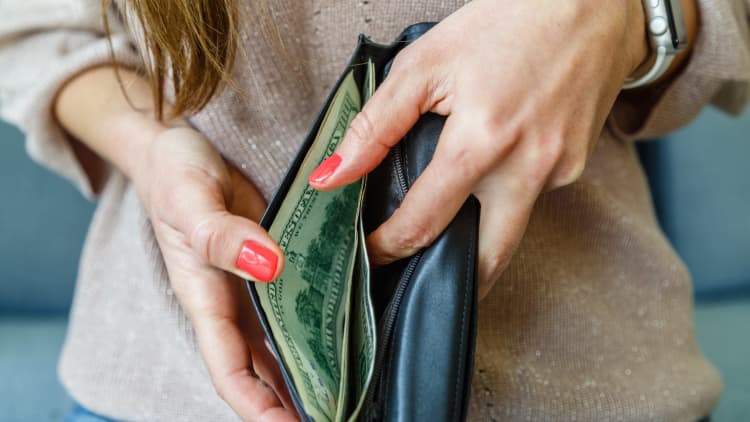These days, savers can get better returns on their cash than they have in nearly two decades.
After a series of interest rate hikes from the Federal Reserve, top-yielding online savings account rates are now more than 5%, according to Bankrate.com.
"Moving your money to a high-yield savings account is the easiest money you are ever going to make," said Greg McBride, Bankrate.com's chief financial analyst.
More from Personal Finance:
The inflation breakdown for September 2023 — in one chart
Social Security cost-of-living adjustment will be 3.2% in 2024
Lawmakers take aim at credit card debt, interest rates, fees
Yet, some people are forgoing competitive returns altogether in favor of keeping cash, literally, at home.
How cash stuffing works
After gaining popularity on TikTok, more young adults are trying the so-called envelope method, or "cash stuffing," to stay on budget and out of debt.
The premise is simple: Spending money is divided up into envelopes representing your monthly expenses, such as groceries and gas. When the cash in one envelope is spent, you're either done spending in that category for that month, or you need to borrow from another envelope.
"There is this back-to-basics mentality," said Ted Rossman, senior industry analyst at Bankrate.
Such tools can help impose discipline, he said, which is "a reasonable way to stay on budget."
However, it's not "the ideal scenario," he added.
Some downsides of keeping cash
Stashing cash not only forgoes the protections that come with consumer banking, but it may also leave you vulnerable to theft.
Whether you are covered in case of a burglary may depend on your home insurance policy, whereas banks are covered by the FDIC, which insures your money for up to $250,000 per depositor, per account ownership category.
Then there is the additional cost that McBride flagged: a missed opportunity to earn up to 5% on your savings.

"Generally, introducing the idea of budgeting is probably a positive thing, but if folks are leaning on cash as opposed to taking advantage of the highest returns we've seen in a long time in high-yield savings accounts, then they are leaving money on the table," said Matt Schulz, chief credit analyst at LendingTree.
For example, if you have $5,000 in a high-yield savings account earning 5%, you'll make $250 in interest in a year.
"When you are living paycheck to paycheck, every little bit helps," Schulz said.
Alternatives such as Treasury bills, certificates of deposit or money market accounts have also emerged as competitive options for cash, although this may mean tying up your savings for a few months or more.
Vet financial advice from social media
For consumers in search of sound financial advice, "there is a tremendous amount of education out there," said Howard Dvorkin, a certified public accountant and the chairman of Debt.com.
But like all things on social media, not all of the "expert" advice you see is necessarily true, or the best fit for your financial situation. While there are ways to vet traditional financial advisors, it's much harder to find out the intentions or possible conflicts of interest of someone offering advice online.
Dvorkin recommends seeking out credible sources such as the National Foundation for Credit Counseling or the Consumer Financial Protection Bureau.
"Stay away from TikTok, stay away from Instagram," he said.
Subscribe to CNBC on YouTube.
Don't miss these CNBC PRO stories:
- Want to retire in 5 years? Here's how to invest for it, according to the pros
- Morgan Stanley says the average stock is breaking down, S&P 500 to fall to 3,900 by year-end
- This highly profitable industry is booming as the population ages
- This chip stock is getting a ton of love from Wall Street, and it's not Nvidia


